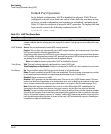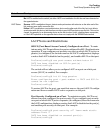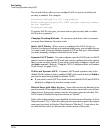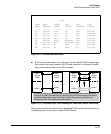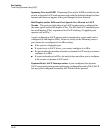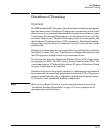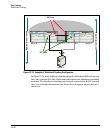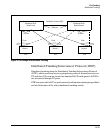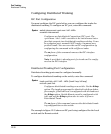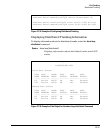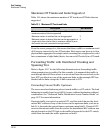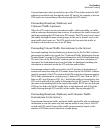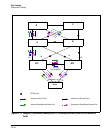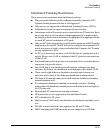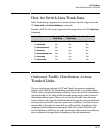
Port Trunking
Distributed Trunking
Configuring Distributed Trunking
ISC Port Configuration
You must configure the ISC ports before you can configure the trunks for
distributed trunking. To configure an ISC port, enter this command:
Syntax:
switch-interconnect <port-num | trk1...trkN>
no switch-interconnect
Configures an InterSwitch-Connection (ISC) port. The
<port-num | trk1...trkN> variable is the interconnect inter-
face that connects two distributed trunking switches. It can
be a physical port, manual LACP trunk, or manual non-
protocol trunk. You can override an ISC configuration by
configuring the command with a different value.
The no form of the command removes the ISC interface
configuration.
Note: A port that is already part of a trunk can’t be config-
ured as an ISC interface.
Distributed Trunking Port Configuration
Distributed trunking ports must be configured manually.
To configure distributed trunking on the switch, enter this command:
Syntax:
trunk <port-list> <trk1 | trk2 ... trkN> [trunk | lacp | dt-lacp]
no trunk <port-list>
Configures distributed trunking on a switch. Use the dt-lacp
option. The trunk groups must be identical in both switches,
for example, if Switch Local is configured with trk1and uses
the dt-lacp option, Switch Remote must be configured with
trk1 and use the dt-lacp option also in order to form a
Distributed Trunk.
The no form of the command removes the distributed trunk-
ing configuration on the switch.
The example in figure 12-15 shows an ISC port being configured for the Local
switch and the Remote switch.
12-30



